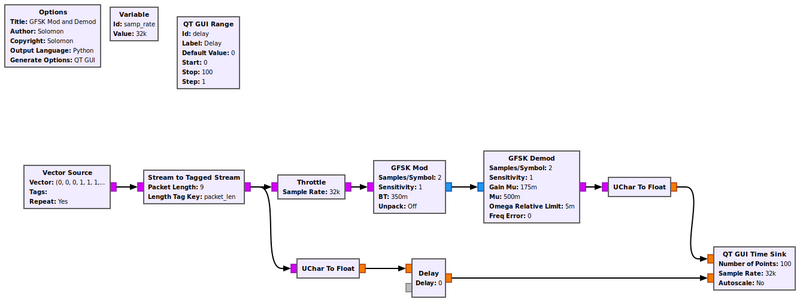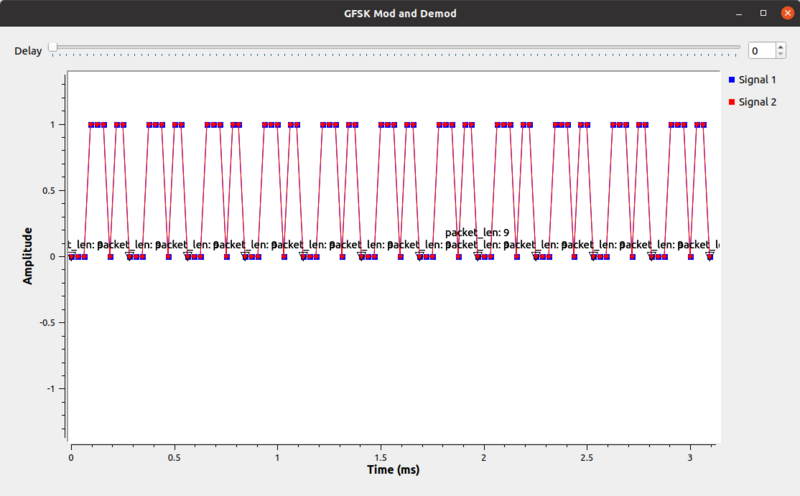GFSK Demod: Difference between revisions
Jump to navigation
Jump to search
No edit summary |
(Add example flowgraph for the GFSK Demod block) |
||
| Line 34: | Line 34: | ||
== Example Flowgraph == | == Example Flowgraph == | ||
The flowgraph below shows an example of the GFSK Mod and GFSK Demod blocks in action. We GFSK modulate 9-bit long bit stream '000111011', and then GFSK demodulate it. Then we compare the two bit streams to make sure that they are the same. | |||
[[File:Gfsk_mod_and_demod.png|800px]] | |||
When the flowgraph runs, we see that the red and blue signals are the same, meaning that the bit streams before and after the GFSK modulation and demodulation are the same. | |||
[[File:Gfsk_mod_and_demod_in_action.png|800px]] | |||
== Source Files == | == Source Files == | ||
Revision as of 14:51, 21 July 2021
Hierarchical block for Gaussian Minimum Shift Key (GFSK) demodulation.
The input is the complex modulated signal at baseband.
The output is a stream of bits packed 1 bit per byte (the LSB)
Parameters
- Samples/Symbol
- Samples per baud >= 2 (integer)
- Sensitivity
- Given to the Quadrature Demod
- Gain Mu
- Controls rate of mu adjustment
- Mu
- Fractional delay [0.0, 1.0]
- Omega Relative Limit
- Sets max variation in omega (float, typically 0.000200 (200 ppm))
- Freq Error
- Bit rate error as a fraction
- Verbose
- Print information about modulator?
- Log
- Print modualtion data to files? (bool)
Example Flowgraph
The flowgraph below shows an example of the GFSK Mod and GFSK Demod blocks in action. We GFSK modulate 9-bit long bit stream '000111011', and then GFSK demodulate it. Then we compare the two bit streams to make sure that they are the same.
When the flowgraph runs, we see that the red and blue signals are the same, meaning that the bit streams before and after the GFSK modulation and demodulation are the same.
Source Files
- Python files
- [1]
- Block definition
- [2]

